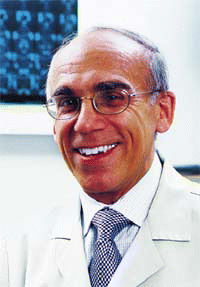The Holter apnea monitor was used on 14 adult patients and the Holter oximeter on 47 adults and three children between March 2006 and January 2007 in an unattended home setting. After placing chest electrodes on patients and securing the oximetry finger probe on those using the Holter oximeter, the medical assistant instructed the patients (or parents) on the use and removal of the device. Patients were also instructed to record the time at which they went to sleep, awoke, or experienced any other events during the night.
Explore This Issue
October 2007Patients were also asked to complete a brief questionnaire regarding any discomfort related to the device. Few patients complained about sleeping with the device and none complained about it interfering with their daily life, even the children, said Dr. Stern. In fact, most patients were surprised and pleased with the ease of use and rapid test results.
When the device was returned the next day, the medical assistant obtained any other information regarding the test and inquired specifically about electrode disconnections during the test. The assistant then transferred data via a compact flash card from the Holter device to a desktop computer for analysis.
We believe that the Holter oximeter represents a very promising new method of screening for OSA in the unattended home environment, said Dr. Stern. It uses time-tested inexpensive devices to produce a reliable and sensitive measure of the AHI. Compared to other tests currently used for home screening of OSA, it has a very high reliability rate and correlates well with PSG. It could become a first-line screening tool for OSA in the adult population and is especially promising in the pediatric population, where the most common screening device has been pulse oximetry alone.
Pulse oximetry in children is problematic. The pathophysiology of OSA in children is different from that in adults, with frequent episodes of upper airway obstruction that are not associated with saturation drop.5 In children, there are large numbers of movement artifacts, due to their more restless sleep.6 These artifacts can cause low saturation recordings and a large number of false positive findings. A recent study questioned the validity of pulse oximetry in children and suggested that if it is used as a test for the diagnosis of OSA, it should be associated with additional sensors, such as motion sensors or measures of airflow.7
It’s even more difficult to get kids into a lab and get them to sleep, as their sleeping position is restricted because of the numerous electrodes and their sleep is interrupted by technicians repositioning the electrodes, said Dr. Stern. The home device is a major advance for screening kids, as it eases follow-up and retesting after treatment.

Leave a Reply